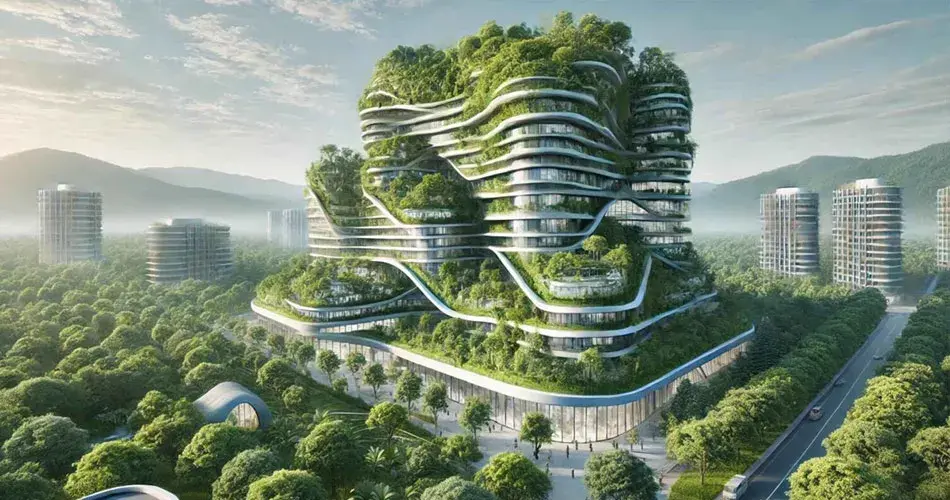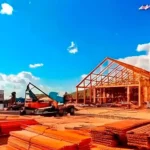The construction industry in Europe is undergoing a transformative shift. It’s driven by stringent EU sustainability regulations, the strategic implementation of the European Taxonomy and an increasing demand from clients for greener practices.
This shift is reshaping the way buildings are designed, constructed, and maintained, paving the way for a more sustainable future. As the industry adapts to new legislative requirements, it is also seizing the opportunities presented by the growing market for sustainable construction solutions. This transformation is not just a regulatory obligation; it is an unprecedented opportunity for the industry to innovate and lead in the global transition to sustainability.
A new regulatory landscape
The EU has set ambitious targets to reduce CO2 emissions and promote sustainability across all sectors, including construction. Key legislative frameworks such as the European Green Deal and the Fit for 55 package are at the forefront of this transformation. These initiatives aim to reduce greenhouse gas emissions by 55% by 2030 compared to 1990 levels. The ultimate goal is to achieve climate neutrality by 2050.
A central element of this regulatory push is the Energy Performance of Buildings Directive (EPBD), which mandates that all new buildings in the EU must be nearly zero-energy buildings by 2030. The directive also sets stringent energy performance standards for existing buildings, requiring significant improvements in energy efficiency through renovations. This regulatory framework is driving innovation in building materials, design practices, and construction techniques, as the industry strives to meet these new standards.
In addition to the EPBD, the EU’s Waste Framework Directive (WFD) is playing a crucial role in promoting circular construction practices. The directive mandates a 70% recycling and reuse rate for construction and demolition waste, encouraging the industry to reduce waste, reuse materials, and adopt more sustainable construction methods. These regulations are not only pushing the industry towards more sustainable practices but also creating new market opportunities for companies that can offer innovative solutions to meet these requirements.
Boosting innovation in buildings
Decarbonizing buildings is another critical area where EU regulations are having a significant impact. The construction industry is a major contributor to global greenhouse gas emissions, with buildings accounting for 36% of energy-related emissions in the EU. The EPBD addresses this issue by setting ambitious targets for improving the energy efficiency of buildings.
One of the key provisions of the EPBD is the requirement for all new buildings to be zero-emissions by 2030. This means that buildings must not only be energy-efficient but also generate renewable energy on-site or be connected to clean energy sources. In addition, the directive requires member states to develop national plans for the renovation of existing buildings, with a focus on improving the energy performance of the worst-performing buildings.
The push towards zero-emissions buildings is driving innovation in building materials and construction techniques. Companies are developing new materials, such as advanced composites and bio-based insulations, that offer improved energy efficiency and lower environmental impact. In parallel, smart building technologies are becoming increasingly important, enabling buildings to optimize energy use in real-time and reduce their overall carbon footprint.
The shift towards decarbonized buildings is not only a regulatory requirement but also a response to growing market demand. Clients are increasingly seeking buildings that are energy-efficient, environmentally friendly, and cost-effective to operate. This demand is creating new opportunities for companies that can offer innovative solutions to meet these needs.
Circularity: the key to change
Circular construction, which focuses on reducing waste and reusing materials, is another area where the EU’s sustainability regulations are having a significant impact. The Waste Framework Directive is a key driver of this shift, setting ambitious targets for the recycling and reuse of construction and demolition waste.
Circular construction practices are becoming increasingly important as the industry moves towards a more sustainable future. By reducing waste and reusing materials, companies can minimize their environmental impact, reduce costs, and comply with regulatory requirements. In addition, circular construction offers significant economic benefits, as it creates new markets for recycled materials and promotes the development of innovative technologies.
Digital technologies are playing a crucial role in advancing circular construction practices. AI and blockchain, for example, are being used to track materials throughout the construction process, ensuring that they can be efficiently reused or recycled at the end of their life. These technologies are enabling the industry to close the loop on material use, reducing waste and promoting sustainability.
European Taxonomy: a strategic role
The European Taxonomy is a classification system established by the EU to guide investments towards environmentally sustainable projects. It defines which economic activities can be considered sustainable, providing clear guidance to investors, companies, and policymakers. The Taxonomy plays a strategic role in aligning the construction industry with the EU’s climate goals, especially in reducing carbon emissions and promoting circular economy principles.
For the construction industry, the European Taxonomy is more than just a regulatory framework; it is a powerful tool for driving sustainable innovation. By clearly defining which activities qualify as sustainable, the Taxonomy helps construction companies and investors focus on projects that align with long-term environmental goals. This includes the adoption of low-carbon technologies, the use of sustainable materials, and the implementation of energy-efficient building designs.
The Taxonomy also facilitates access to green financing, making it easier for companies to secure funding for sustainable projects. Financial institutions that prioritize sustainability are more likely to invest in projects that meet the criteria defined by the Taxonomy, creating a virtuous cycle where sustainable projects receive more funding, leading to greater innovation and wider adoption of green practices in the construction industry.
Challenges and opportunities
While the European Taxonomy presents significant opportunities for the construction industry, it also poses challenges. Companies need to invest in new technologies and processes to meet the criteria, which can involve significant upfront costs. However, the long-term benefits of aligning with the Taxonomy — such as access to green financing, enhanced reputation, and compliance with future regulations — are likely to outweigh these initial investments.
Moreover, the Taxonomy supports the European Green Deal’s ambition to make Europe the first climate-neutral continent by 2050. By steering investments towards sustainable construction projects, the Taxonomy ensures that the industry contributes effectively to this goal.
Crucial role of startups
Startups are playing a critical role in driving sustainable innovation in the construction industry. While large companies have the resources to develop and deploy new technologies, startups often bring fresh perspectives and agile approaches to the table. These companies are developing innovative solutions that address the industry’s most pressing sustainability challenges, from energy efficiency to circular construction and waste reduction.
The startup ecosystem in the construction industry is thriving, with a growing number of companies focused on developing sustainable technologies and practices. These startups are often supported by venture capital and other forms of investment, which are increasingly being directed towards green technologies. In addition, collaboration between startups and established companies is becoming more common, as both sides recognize the benefits of combining their strengths to drive innovation.
The impact of startups on the construction industry is significant. These companies are not only helping to advance new technologies but also driving cultural change within the industry. By demonstrating the value of sustainable practices and proving that they can be profitable, startups are encouraging more companies to adopt green technologies and practices.
Becoming a pioneer of the green transition
Ultimately, the drive towards sustainability in the construction industry is creating significant market opportunities for companies that can offer innovative solutions. The demand for green buildings is growing, as clients increasingly seek structures that are energy-efficient, environmentally friendly, and cost-effective to operate. This demand is being driven by both regulatory requirements and market forces, as companies recognize the economic benefits of sustainability.
The European Taxonomy plays a crucial role in this transformation, guiding investments towards sustainable projects and ensuring that the construction industry contributes to the EU’s climate goals. By aligning with the Taxonomy and other EU regulations, companies can unlock new market opportunities, attract green financing, and build a reputation as pioneers in sustainable construction.
However, the shift towards sustainable construction also presents challenges. Companies must navigate a complex regulatory landscape, invest in new technologies, and adapt their business models to meet changing market demands. In addition, the industry faces the challenge of scaling up new technologies and practices to meet the growing demand for sustainable construction.
Despite these challenges, the future of construction in Europe is green. Companies that embrace sustainability and invest in new technologies will not only comply with regulatory requirements but also position themselves as leaders in a rapidly evolving market. The construction industry is at a critical juncture. The decisions made today will shape the future of the industry for decades to come.
Daniel has 20 years of experience in business and financial journalism, having worked in Zurich, Tokyo, Buenos Aires, and Mumbai. Over the years, he has covered start-ups, cleantech, and the Swiss construction sector in depth.
Deeply concerned about environmental issues and fully aligned with Raphaël’s vision of making the ecological transition more accessible and impactful for companies, he joined the project and co-found GoEko alongside him.




